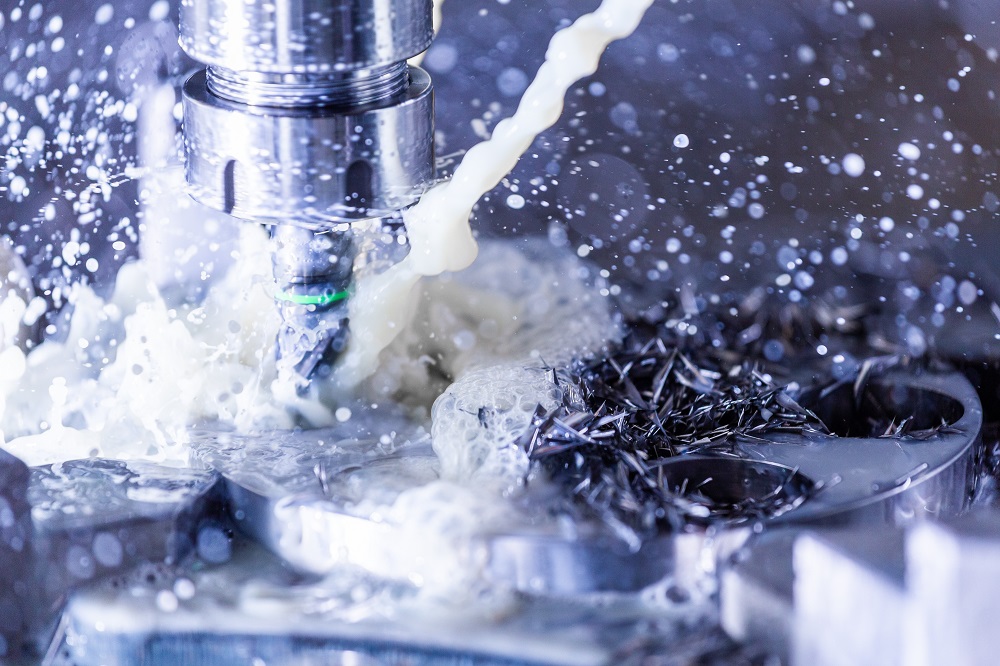COVID-19, social distancing, and an unstable market created many challenges for metalworking in 2020. With the upward trend in the U.S. Manufacturing and Capacity Utilization Rate, all signs suggest the metalworking industry will largely recover in the first half of 2021.
However, many operations might need an upgrade to their cutting fluid, equipment, or both to keep up with growing production demand.
Learn how new investments can get your metalworking operation to perform optimally in 2021 and beyond:
When to Upgrade Cutting Fluids
The newer generations of cutting fluid offer unparalleled combinations of lubricity, cooling ability, and long sump life, allowing machines to perform their best. Upgrading to a higher-quality cutting fluid is a great way to improve productivity and lower operating costs without investing in expensive new machines.
A coolant upgrade is ideal when you need to:
Reduce Tramp Oil
Older machines may be reliable, but their functionality can create more contaminants than newer models. The advanced cutting fluids in the TRIM® brand line are specially formulated to reject tramp oil to the surface for easy skimming or coalescing.
Extend Tool Life
With proper maintenance, high-quality coolant can extend tool life. The new TRIM® HyperSol 888NXT, a first-of-its-kind neo-synthetic coolant, increased tool life for an aerospace parts manufacturer by 234 percent. The same product extended tool life by 22 percent for an automotive manufacturer engaged in titanium milling, saving $93,808 in manufacturing costs each year.
Reduce Overall Operating Costs
Next-generation, high-quality coolants often cost more per gallon than older formulations. However, they perform better at lower concentrations and have a longer sump life, so the reduced consumption greatly lowers costs over time. The automotive manufacturer mentioned above saved an estimated $17,450 on coolant annually.
When to Upgrade Machines
Experts prize the latest generation of metalworking machines for their high speeds and compatibility with technology, but upgrading comes with greater financial risk. New equipment requires a much larger upfront investment than coolant, and the ROI may take longer to achieve. Upgrading coolant can allow greater material removal rates, increasing throughput and allowing more parts to be machined on existing equipment.
It’s usually best to purchase new equipment when you want:
More Capabilities
Next generation CAD/CAM and programmable tool paths don’t just reduce labor costs and cycle times — they enable operations that wouldn’t be possible otherwise. Newer machinery is also necessary for data-driven operations that help managers measure performance metrics and track material use. Older machines often aren’t designed to integrate with technology, so if you want to have any high-tech capabilities in your operation, you may have to invest in newer machines that can handle them.
Reduce Cycle Times
Many newer machines are designed to be multi-axis and multifunctional. This can greatly improve throughput since there is less need to move work-pieces to new machines or spend time changing out cutting tools.
Reduce Power Consumption
Newer machines are designed with energy-efficiency in mind, requiring less power to operate. This translates to lower utility costs for an operation and can also extend tool life through greater precision. Newer high-performance machines vibrate less, allowing higher speeds and feeds and tooling to be utilized at its full potential.
Always Match New Equipment With New Coolant
If you do make the investment in newer metalworking machines, make sure to upgrade to newer technology coolant as well. The latest generation of equipment works faster than older models, and only the latest cutting-fluid formulas can keep up with their speed and feeds. Without the right metalworking fluid, all the gains in throughput could be lost, and equipment and cutting tools may deteriorate faster.
Carefully consider budgets and be clear about the goal of a purchase before you decide if and how to upgrade your operation. When purchasing expensive new equipment, factor in the training that employees will need, as well as the cost of new fluids and tooling.
If investing in a new machine is out of reach, you might be surprised by the impact of higher-quality cutting fluid and proper maintenance protocol on your operation. For help optimizing your coolant, call +1 800-537-3365 or email us at [email protected].

